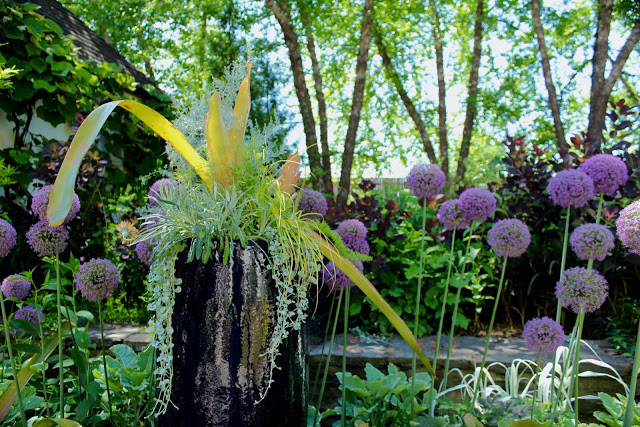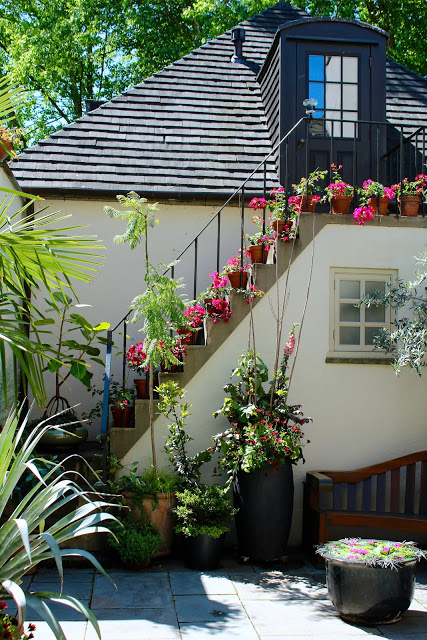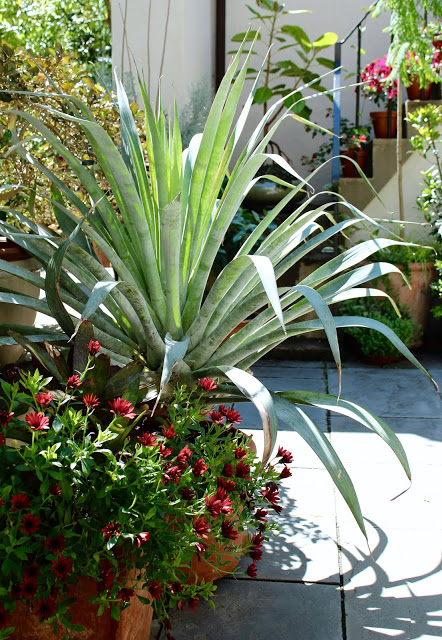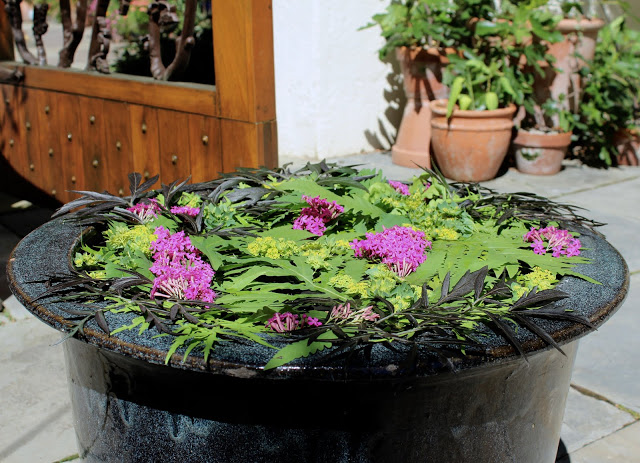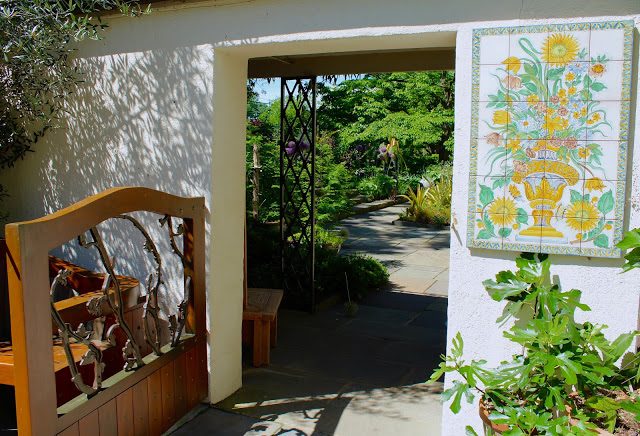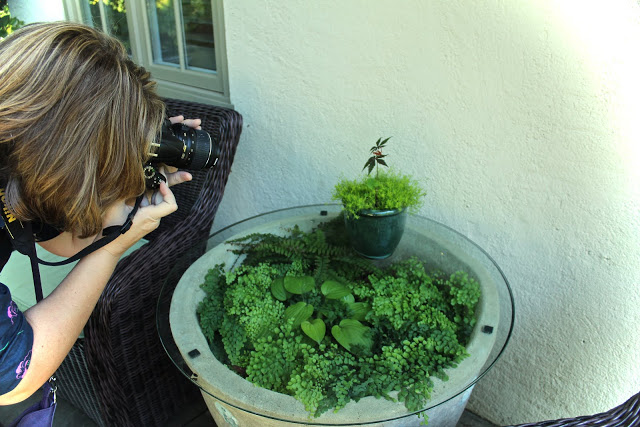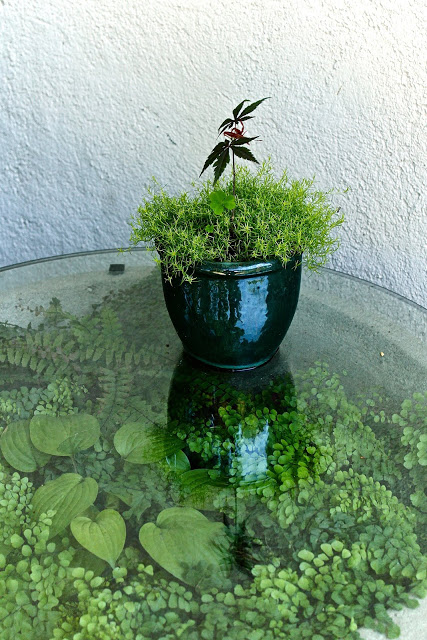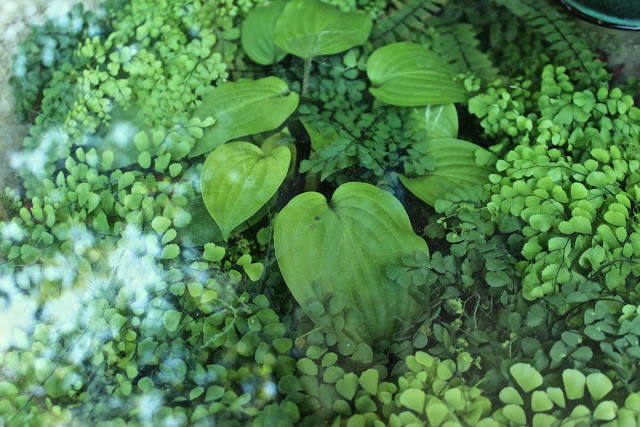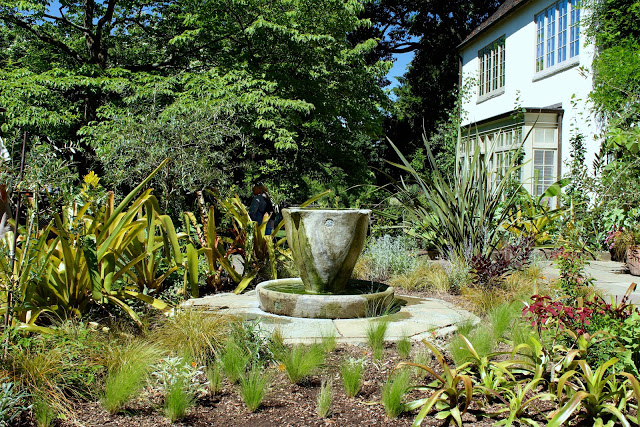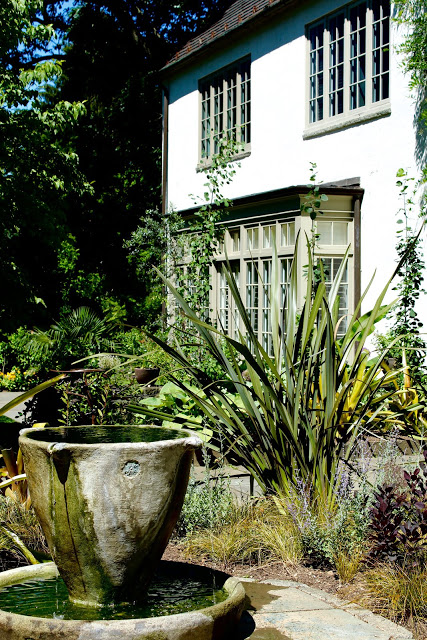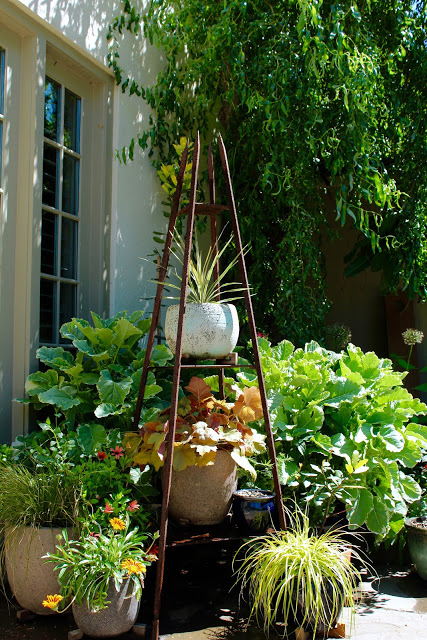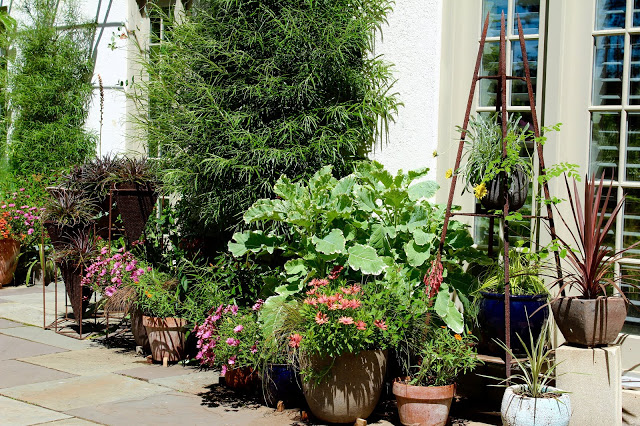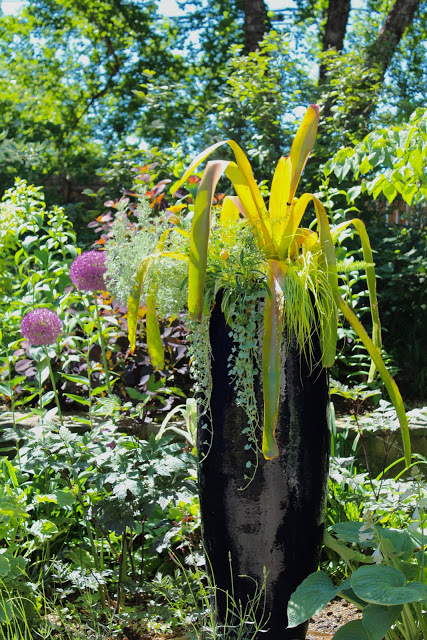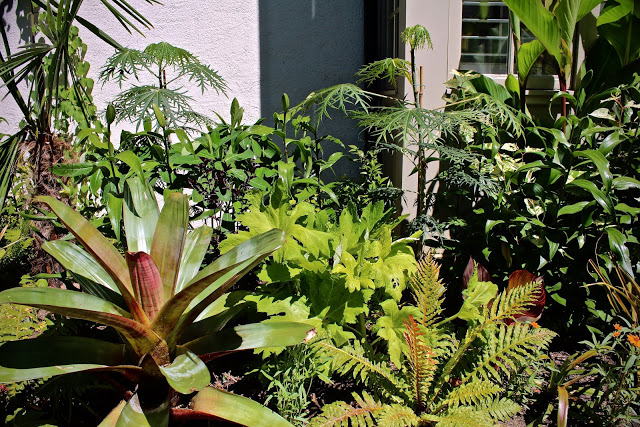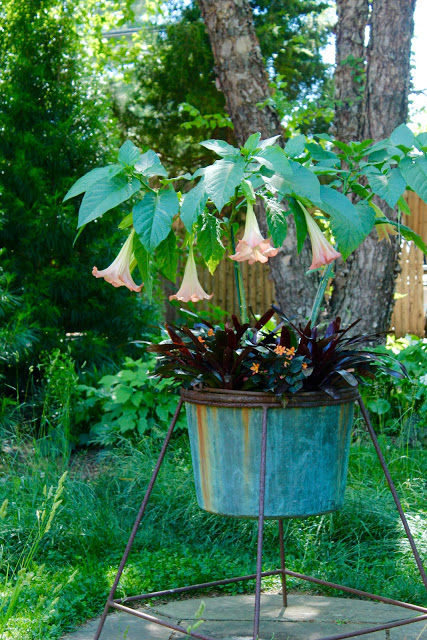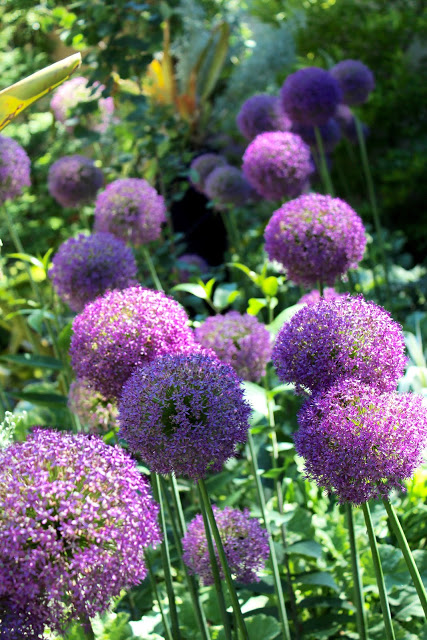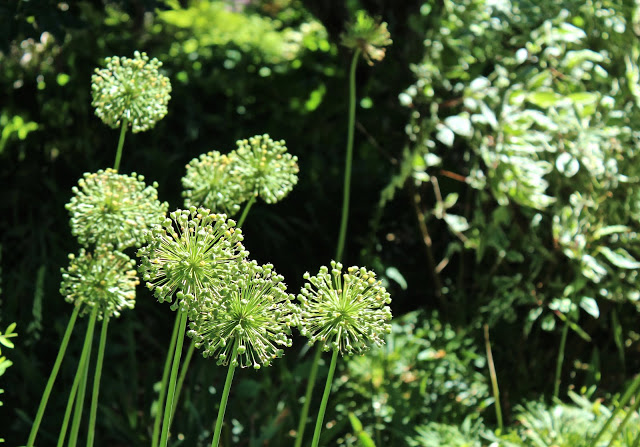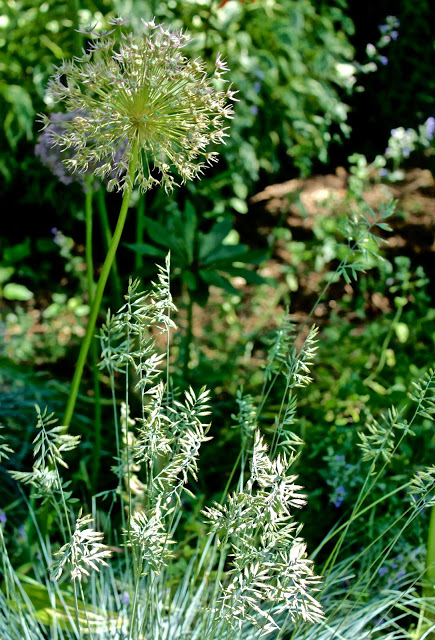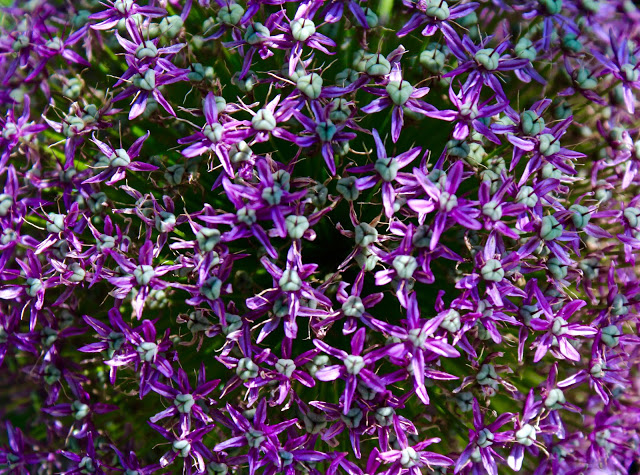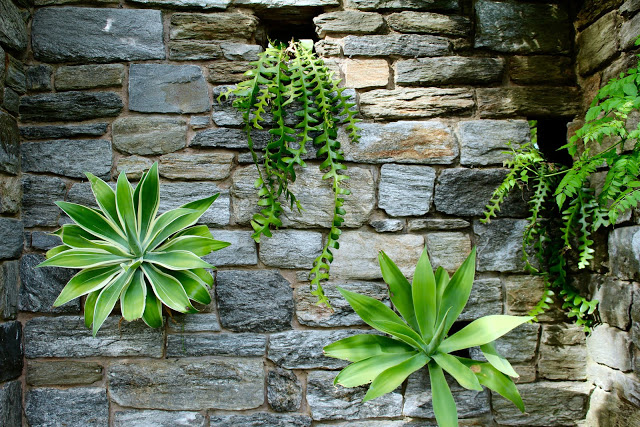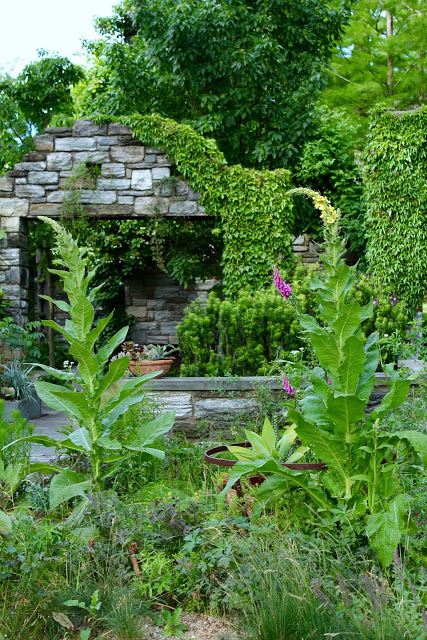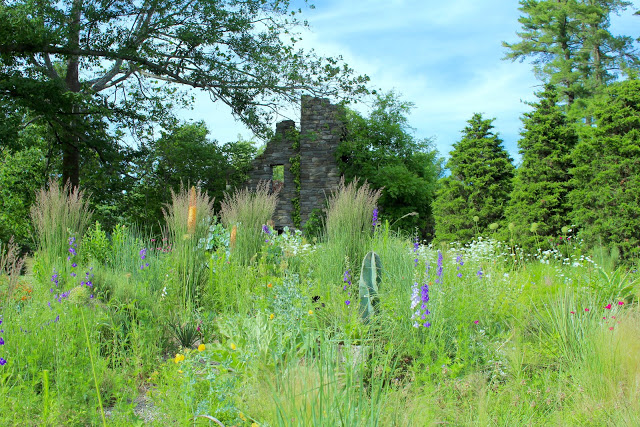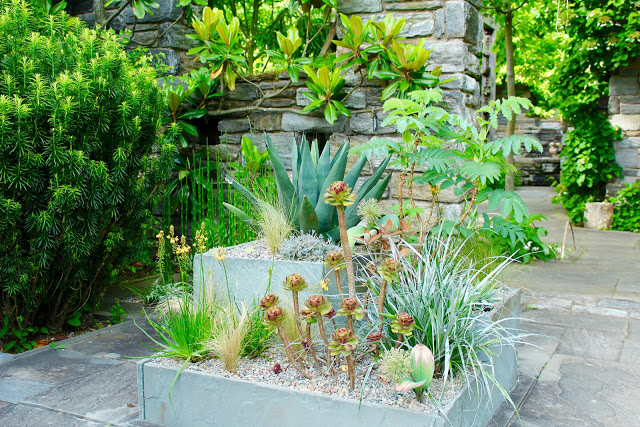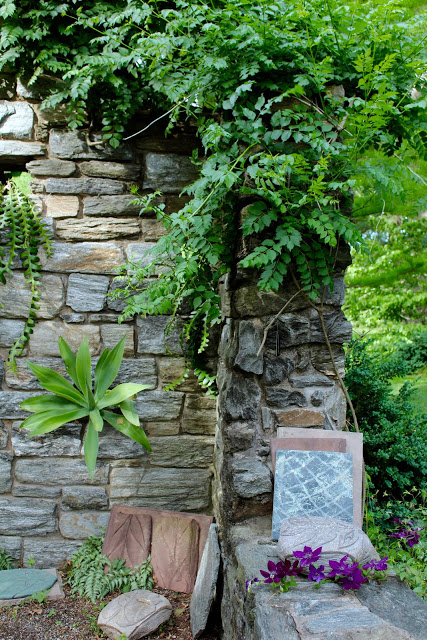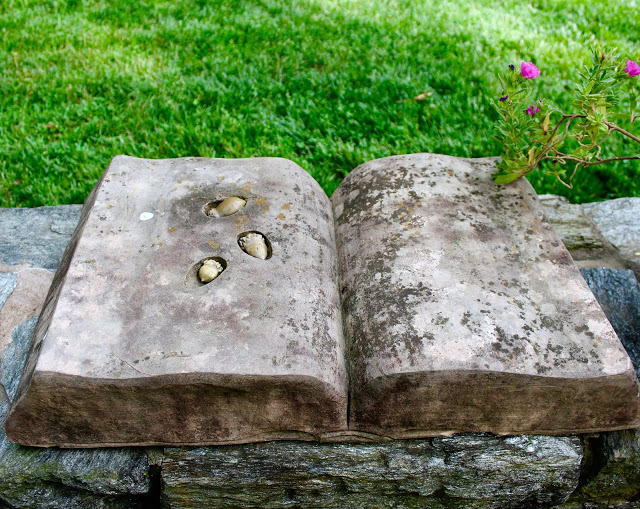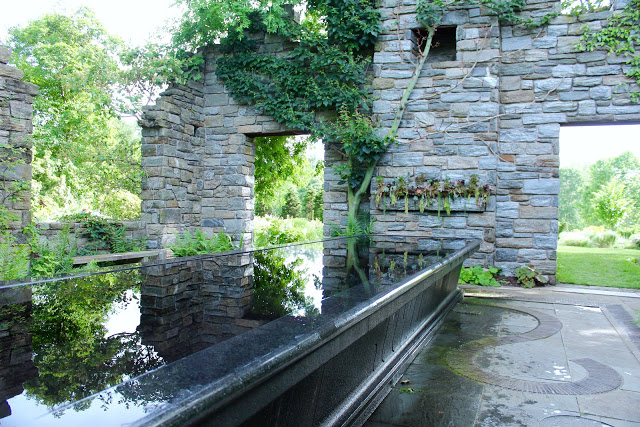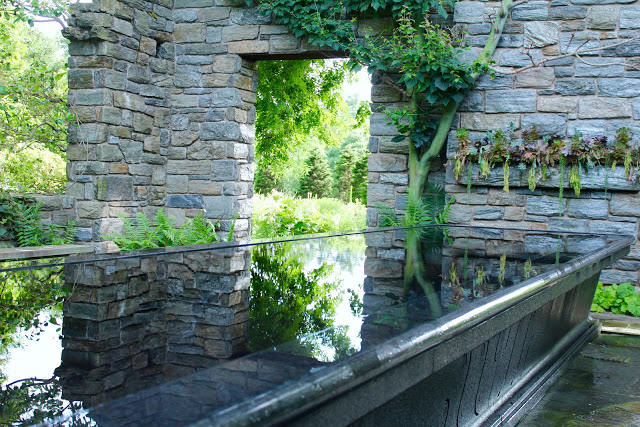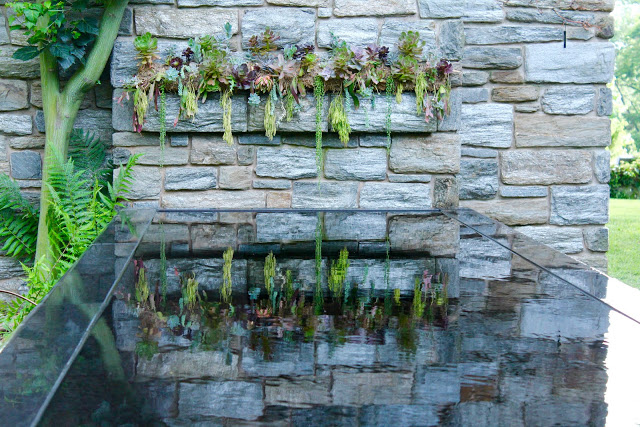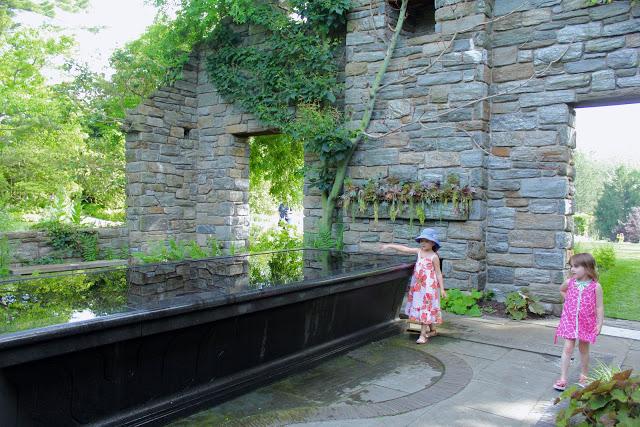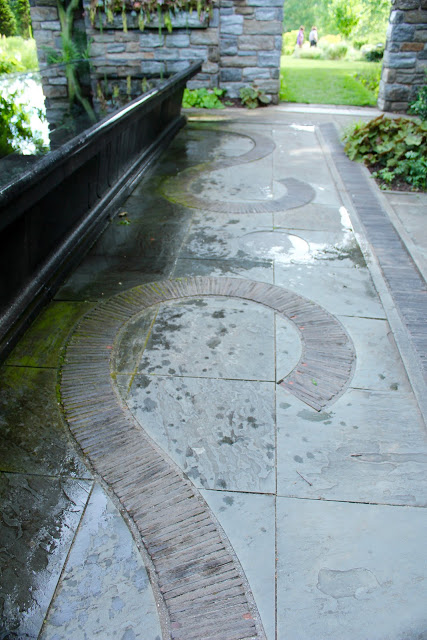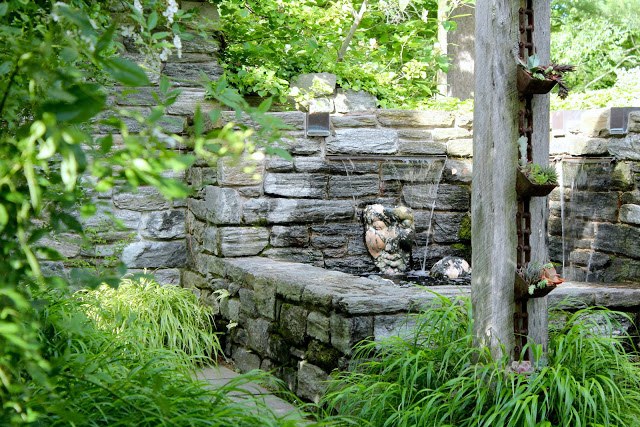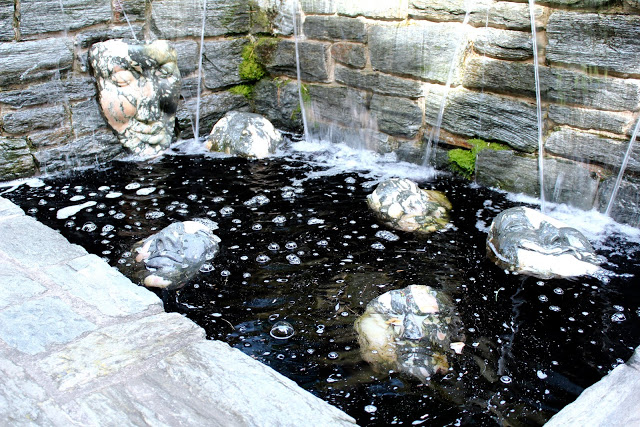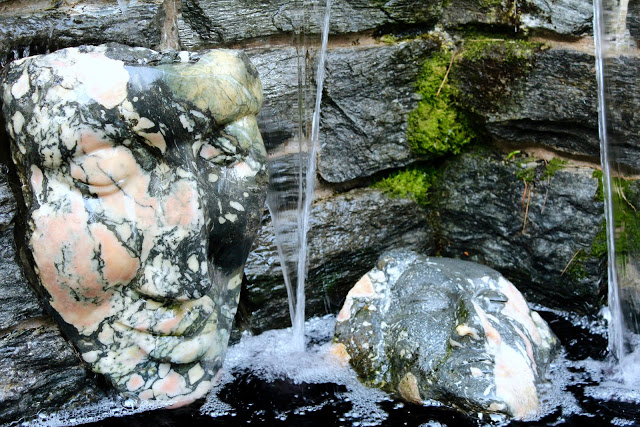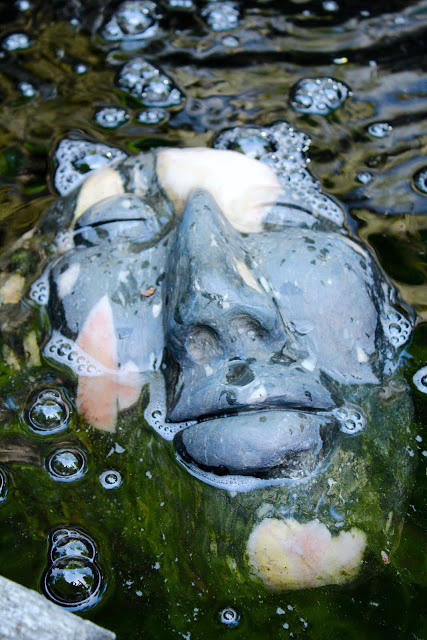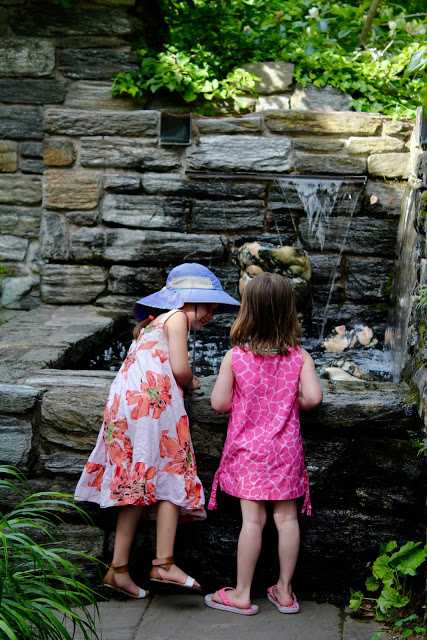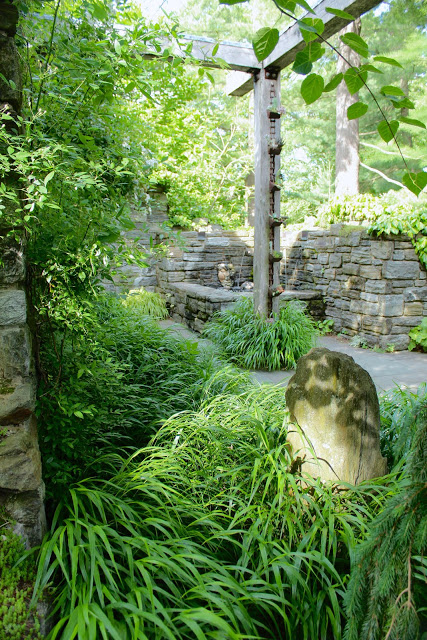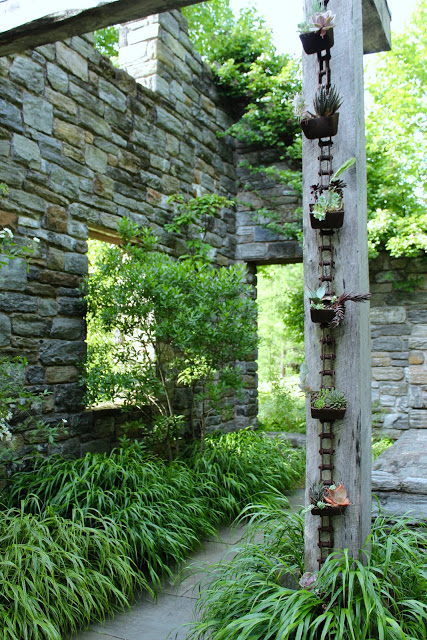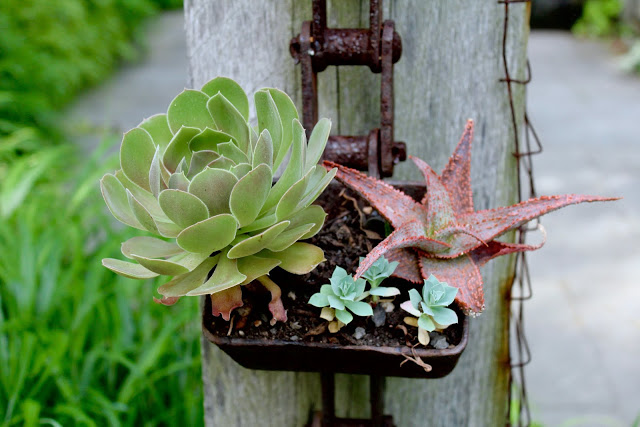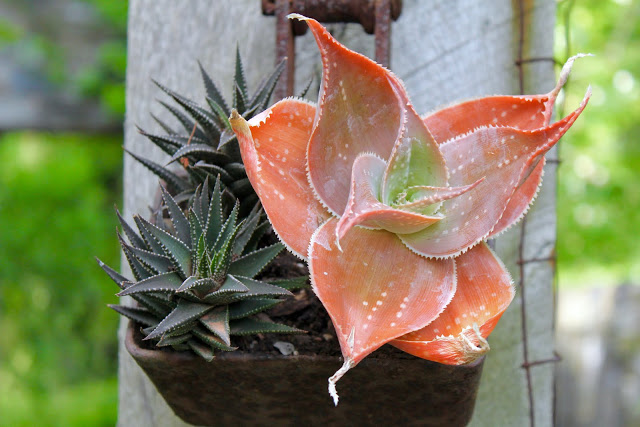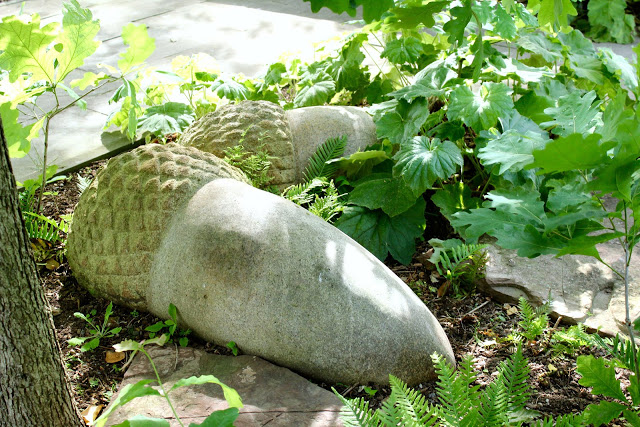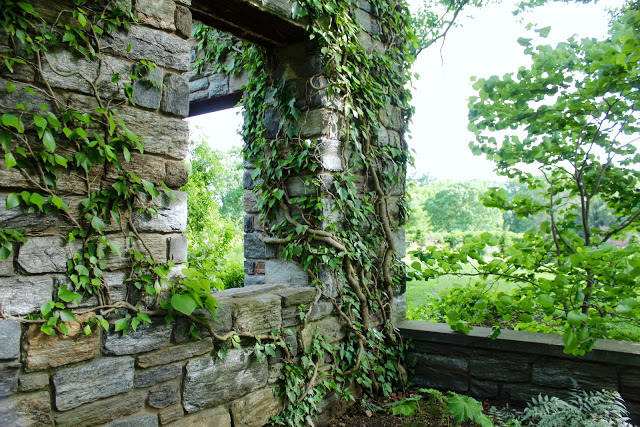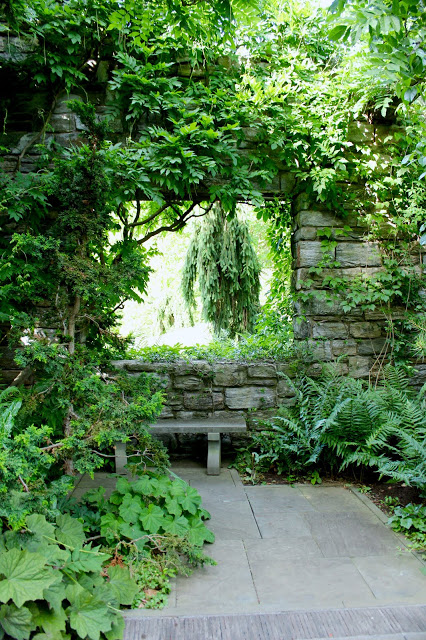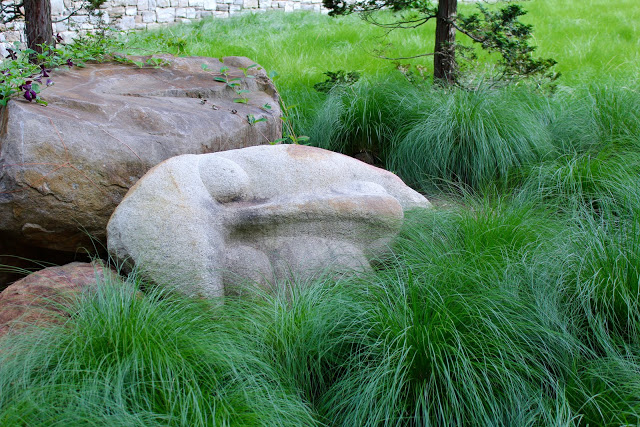More Chanticleer magic — the Tea Cup Garden
I really had no sense of the vastness that awaited me in all three of the gardens that my friend, Pam, of Digging, and I visited on our recent trip to the Brandywine Valley area of Pennsylvania.
Upon entering the third garden, Chanticleer, on the third morning of our trip, the sun was already high in the sky and the day was heating up. The entrance area is rather small – a covered outdoor area on a patio with a nice selection of planters and a desk where the staff politely welcomed us. We started where most people start, entering through the small Kitchen Courtyard Garden just beyond the entrance.
The initial courtyard is filled with creative planters as well as fresh flowers.
Each day, the gardeners scatter fresh-cut flowers in vases and containers like this throughout the garden. These float gently on top of the water in this pot.
Filled with an array of tempting tropicals, the next garden, beyond the ornate gate, is the Tea Cup Garden. It is said to change significantly from year to year or even season to season, as most of its plants don’t overwinter in the this cold-climate garden. Come on in, the weather’s fine.
Taken by this delicate display, Pam captures it with her camera.
Now, my turn!
I love the reflection of the light in the sky against the glass table top, adding another dimension to this vignette.
The namesake of this garden, a tea cup-like planter, provides the focal point of the inner courtyard filled with tropical plants.
Groupings of pots add interest around the perimeter of the courtyard on the right.
The left side of the courtyard includes a raised bed garden, filled with alliums, punctuated by two stunning ceramic planters with silver ponyfoot and bromeliads.
This marks only the beginning of the garden’s vast display of bromeliads. To add to the level of detail in both garden design and identification, Chanticleer’s website includes a meticulously created plant list for each garden. Which, by the way, changes with the seasons and the years. I assumed it would just be an alphabetical list, which would have made IDing plants complicated. Then I clicked on the link and found this
— amazing.
With a small collection of bromeliads, I can’t wait to get all my posts done and then take a good look at the plant list to start making my own wish list!
This delicate peach Brugmansia, ‘Charles Grimaldi,’ rests in a clever container, contrasting beautifully with the rich, eggplant colors of Begonia ‘sparks will fly’ and Neoregelia ‘Elwood.’
So, finally I get to the alliums.
My love affair with alliums began in 2009 at the site of the second Garden Bloggers Fling in Chicago. You can see my post about that tour here
.
I tried twice to grow them in Austin, but our weather heated up much too quickly for them (at least in the years I tried to grow them) and the foliage was fried to a crisp before they reached 1/2 of their mature height. I even planted varieties specifically known to grow in Zone 9, but it just wasn’t meant to be. So, they hold a special interest for me on garden tours to more temperate climates. I’ll have to settle for enjoying the onion blooms in my veggie garden.
Their kaleidoscope structure is even more intriguing up close and personal.
Naturally, Pam and I had to take a selfie with them, though they sort of look like they’re coming out of the back of our heads!
There were so many more beautiful plants and vignettes in the Tea Cup Garden — these are just the highlights. Next, we’ll venture further into the garden. If you missed my first two posts about our fabulous garden trip, you can find them here – Chanticleer’s Ruin Garden
, and here – Longwood Conservatory Garden post #1
(also filled with bromeliads).
I haven’t had time to post all week, but it feels great to “stroll” through my garden photos and share my memories with you. I’ll have another one soon!

